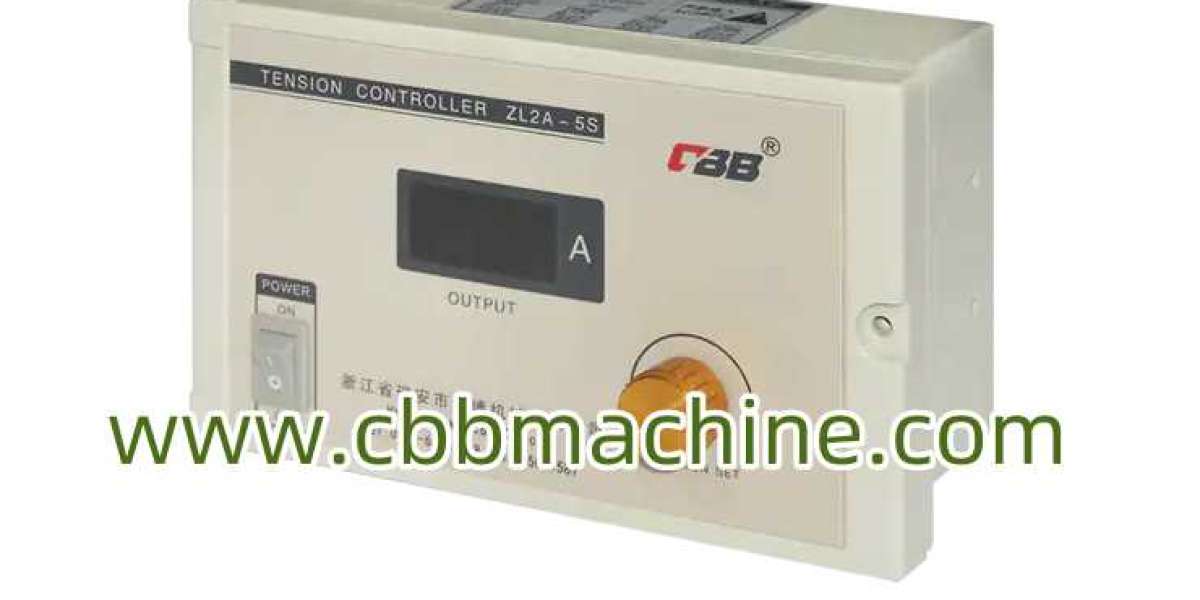Magnetic Powder Brake: Revolutionizing Control in Industrial Applications
In today’s fast-paced manufacturing and industrial processes, precision and control are paramount to ensuring smooth and efficient operations. One such innovation that has revolutionized industrial machinery and manufacturing processes is the Magnetic Powder Brake. Used across a variety of industries, this cutting-edge technology has become essential for precision torque control, tension management, and ensuring the longevity of machines.
In this blog post, we will delve into the workings, benefits, and applications of the Magnetic Powder Brake, explaining why it is a must-have component in modern manufacturing systems.
What is a Magnetic Powder Brake ?
A Magnetic Powder Brake is an electromechanical device designed to provide precise control of rotational torque in industrial machinery. Unlike traditional friction-based brakes, which rely on physical contact between surfaces to create braking force, the Magnetic Powder Brake operates on a non-contact principle, utilizing magnetic fields and powder-based friction.
It consists of three main parts:
Rotor: The rotating component connected to the shaft.
Stator: A stationary part that contains the magnetic coil.
Magnetic Powder: A fine metal powder that lies between the rotor and stator.
When electrical current passes through the stator's magnetic coil, it generates a magnetic field that causes the magnetic powder to form chains, creating friction between the rotor and stator. This friction is what generates the braking force, controlling the rotation speed and torque. The strength of the magnetic field determines how much resistance is applied, allowing for precise adjustments in real-time.
Key Advantages of Magnetic Powder Brakes
1. Precision Torque Control
One of the main benefits of Magnetic Powder Brakes is their ability to provide extremely precise torque control. This makes them ideal for applications that require consistent, adjustable force over time. The torque can be easily adjusted by varying the current passing through the magnetic coil, offering a high level of accuracy and flexibility in regulating machinery speeds.
In industries like paper manufacturing, textile processing, and film production, where the tension applied to the materials needs to be precisely controlled, the Magnetic Powder Brake ensures that machines can run smoothly without fluctuations that might lead to defects.
2. Non-Contact Braking Mechanism
Unlike traditional brakes that rely on physical friction, Magnetic Powder Brakes function on a non-contact principle. This reduces the wear and tear on the brake components, resulting in a longer lifespan and reduced maintenance requirements. The absence of physical contact also means that there is less heat generated, reducing the risk of overheating and increasing the overall durability of the brake system.
This non-contact operation is especially beneficial in high-speed systems where traditional mechanical brakes would experience significant wear over time.
3. Smooth and Gradual Braking
Traditional braking systems can sometimes cause sudden jerks or uneven deceleration, which can be detrimental in precision applications. Magnetic Powder Brakes provide smooth and gradual braking, making them particularly useful in high-speed applications where smoothness is essential to avoid product damage or misalignment.
Whether used in printing machines, winding systems, or automated assembly lines, these brakes offer a reliable means of maintaining consistent speed, thus preventing operational issues such as material tearing or uneven material flow.
4. Minimal Maintenance and Longer Lifespan
Because of their non-contact nature, Magnetic Powder Brakes experience much less wear and tear compared to traditional brakes, making them more reliable in the long term. This translates to lower maintenance costs and fewer replacements, making them a cost-effective option for industries that rely on continuous operation.
The absence of mechanical components in direct contact also means that there is less risk of contamination or corrosion, further extending the lifespan of the braking system.
5. High Thermal Stability
In high-performance applications, where machines operate at high speeds and temperatures, heat buildup can often lead to component failure. Magnetic Powder Brakes are designed to handle these conditions, with their ability to dissipate heat effectively. This ensures stable operation even under demanding circumstances, preventing overheating and maintaining consistent performance.
Applications of Magnetic Powder Brakes
The versatility of Magnetic Powder Brakes makes them suitable for a wide range of industrial applications. Some of the most common applications include:
1. Tension Control in Winding and Unwinding Operations
In industries such as textile manufacturing, film production, and paper processing, precise tension control during winding and unwinding is essential to avoid damage to materials and ensure uniform quality. The Magnetic Powder Brake plays a crucial role in these processes by controlling the torque and ensuring that materials remain under constant tension.
By adjusting the braking force, manufacturers can control the speed of the winding or unwinding process, ensuring that the material does not stretch, tear, or become misaligned.
2. Packaging and Printing Industries
In the packaging and printing industries, machines often need to maintain consistent tension and speed in order to print or package materials correctly. Magnetic Powder Brakes help regulate the movement of printing presses, packaging lines, and other machinery by ensuring the correct amount of torque is applied at all times, reducing the risk of machine malfunction and improving the quality of the final product.
3. Conveyor Systems
Magnetic Powder Brakes are used in conveyor systems to ensure smooth operation and proper load management. By controlling the braking force, these systems can handle varying loads and ensure the proper flow of materials through production lines.
4. Automation and Robotics
As industries increasingly embrace automation and robotics, precise control over speed and torque becomes essential. Magnetic Powder Brakes allow for accurate speed adjustments in robotic arms, assembly lines, and other automated systems, providing smooth control over operations and enhancing overall efficiency.
Why Choose Magnetic Powder Brakes?
Incorporating Magnetic Powder Brakes into your manufacturing systems offers significant advantages in terms of precision, efficiency, and maintenance. Their non-contact operation, precise torque control, and ability to handle high speeds and temperatures make them a crucial component for industries that require high-performance machinery.
If you're seeking to improve the reliability and efficiency of your production processes, investing in Magnetic Powder Brakes can lead to enhanced productivity, reduced downtime, and lower operational costs. With their long lifespan and minimal maintenance needs, these brakes can help ensure that your systems remain in optimal condition for years to come.
Conclusion
The Magnetic Powder Brake is an essential component for industries that demand high precision and reliability in their machinery. Whether it's for winding, packaging, or automated production, these advanced braking systems provide unmatched performance, contributing to smoother operations and higher quality results. Their advantages, including minimal maintenance, high thermal stability, and precise torque control, make them indispensable in modern manufacturing.








